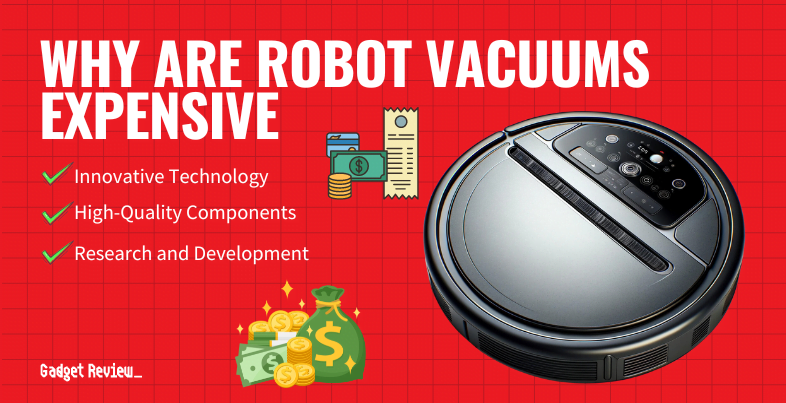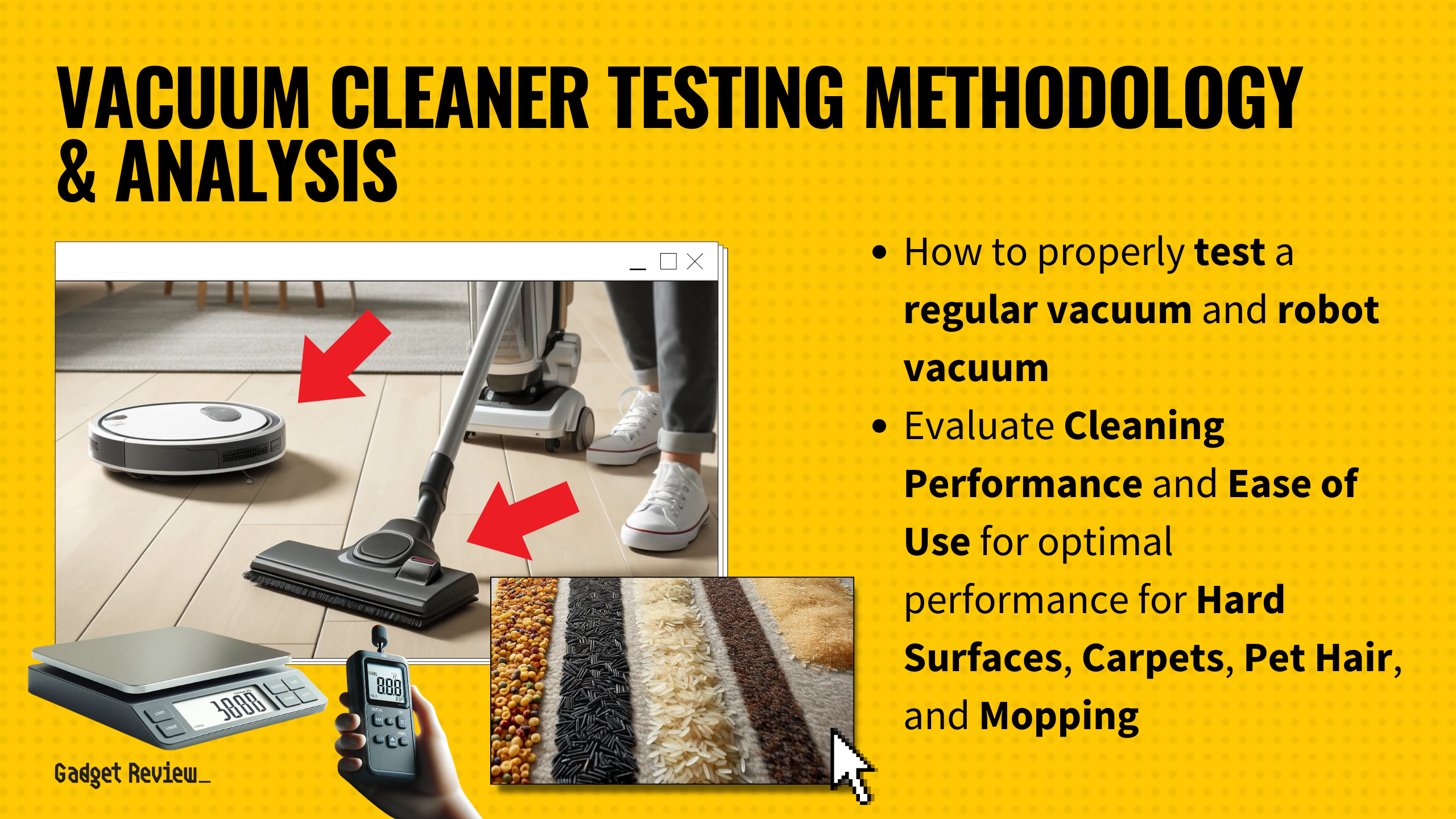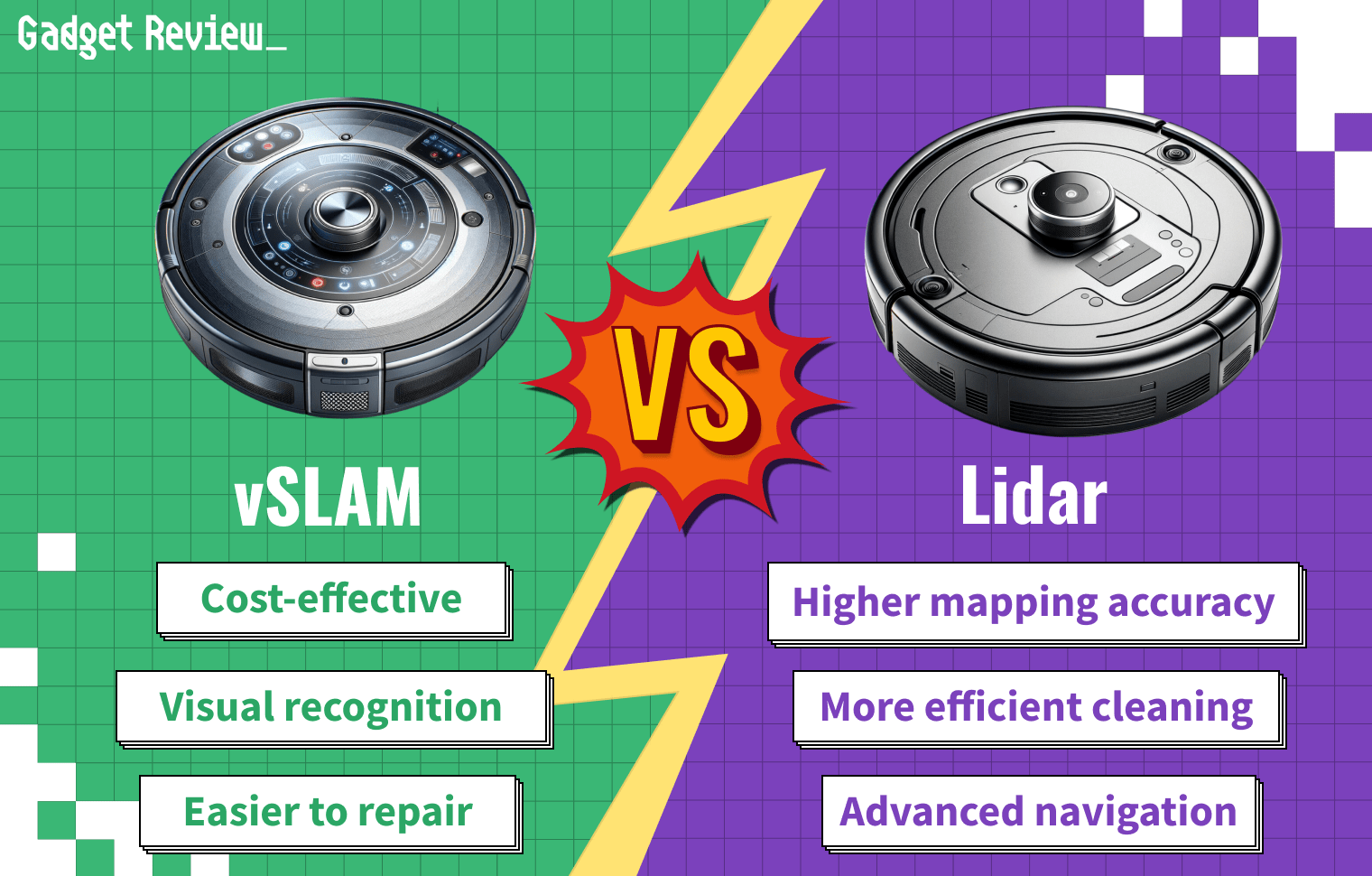In the quest for a cleaner home with minimal effort, robot vacuums have emerged as a great convenience in modern housekeeping. These hands-free cleaning companions promise to keep your floors pristine while you focus on other tasks. But with the myriad of options and features available, the question remains: Are robot vacuums truly worth the investment over traditional vacuums? This article will explore the benefits, limitations, and key considerations to help you make an informed decision.
Key Takeaways_
- People best use robotic vacuums with little time to clean who have a relatively large budget to invest in an excellent cleaning system.
- There are affordable models for robot vacuum cleaners out there, but they will not have “smart” features, and their sensors might not work as well.
- Even the most advanced robot vacuums cannot navigate stairs and must be manually moved between floors when you need a different area cleaned.
Deciding If It’s Worth Buying a RoboVac
Your lifestyle will answer the question, “Are robot vacuums worth it?” better than anything else can.

Consider how busy you are, how hard it is for you to get around to cleaning, and what your budget is for this investment. There are pros and cons to anything, and these cleaning systems are no different.
Advantages of Robot Vacuums
Robot vacuums shine in their ability to perform daily maintenance cleaning with minimal human intervention.
Their compact design allows them to tackle dust and debris in tight spaces, while some models feature brush rolls designed to efficiently pick up debris on various floor types.
The convenience of setting a cleaning cycle to run while you’re away is also a significant advantage, ensuring you return to clean floors every day.
You Save Time and Energy on Cleaning
If you are tired of cleaning day in and day out? Robot vacs can be a massive help in keeping you from losing your mind entirely.
This is especially important for those who might be more mature such as retirees or those living with a disability that makes cleaning difficult.
A robot vac can also clean dirt under furniture versus a traditional upright vacuum that may have difficulty getting under there.
Pet owners with active pets that explore the whole house every day will be relieved of a lot of cleaning with the best robot vacuum for pet hair in 2025.
They use smart navigation as well so through mapping a floor plan, they can shorten cleaning time spans to become more efficient. Plus, with smart sensors, they can navigate around obstacles more easily.

If you pay extra for a self-emptying robot vacuum, the self-emptying models empty their dust bins at their charging base, which will save you the hassle of cleaning up after the cleaning job is done. Although, it should be noted that cheaper models, like you will find in our Yeedi K650 review, usually do not have the self-emptying ability.
Robotic Vacuum Cleaners are Cost-Efficient
While there is a bit of a hefty price to pay at purchase, you’ll quickly see that cost recouped as you begin integrating a robotic vacuum cleaner into your daily routine.
insider tip
You’ll spend far less on electricity with a robotic vacuum than with more powerful upright vacuums or any other type of handheld vacuum.
Their suction has also improved over the years so combined with brushes, these vacuums will suck up more dirt into the dustbin and keep your house cleaner for longer through consistent cleaning cycle settings.
They Require Very Little Maintenance
While repairs can be expensive, robot vacs generally require little in the way of maintenance. They genuinely do just take care of themselves! Make sure their charging dock is clear of any blocks and is plugged in, and you’re pretty much good to go.
Limitations to Consider
However, the limitation of robot vacuums becomes apparent in their dustbin capacity, often requiring frequent emptying, especially in homes with pets.
High-pile carpeting can pose challenges, limiting the effectiveness of some models. While robot vacs excel in maintenance cleaning, they may fall short in deeper cleaning tasks, where the suction power and brush types of traditional vacuum cleaners outperform.
Robot Vacuum Cleaners Can’t Navigate Stairs
Even with the strides that have been made since their introduction in the late ’90s, robot vacuum cleaners still cannot navigate stairs. This means that you’ll have to invest in a model for every floor you have.

You also have the option of moving it manually up and down the stairs, but that takes quite a bit of time and is not ideal, as some models can be rather heavy.
The Lifespan of these Vacuums is Fairly Short
It’s always better to invest in a technologically current model because they will offer the best for longevity, as you’ll see in our iRobot Roomba 692 review. Otherwise, you’re looking at a handful of years at most before needing to replace your robot vacuum.
Repairs Can Be Costly for Robot Vacuums
Depending on the model and your warranty, getting repairs done can be costly. Sometimes you might need to hire a professional robot maintenance specialist.
Keep in mind that doing so can void any warranty you do have, so it might be best to just go through the manufacturer, even if it’s a huge pain to do so.
Why Consider a Robot Vacuum?
Robotic vacuums have come a long way since their inception, evolving from simple dust collectors to sophisticated machines equipped with advanced sensors and smart features.
Their ability to navigate tight corners and clean under furniture autonomously make them an attractive option for busy households.

The allure of robot vacuum cleaners lies in their convenience. With programmable cleaning schedules and rechargeable batteries, these devices offer hands-free maintenance of your floors.
Modern models boast impressive navigation capabilities, ensuring thorough coverage of your space, including those hard-to-reach areas traditional vacuums struggle with.
For allergy sufferers, the benefit of robot vacuums with HEPA filters cannot be overstated, as they can significantly improve indoor air quality.
Robot Vacuums vs. Traditional Vacuums
When comparing robot vacuum vs regular vacuum, it’s important to understand the distinct advantages each brings to your home cleaning routine.
Robot vacuums are designed for convenience and efficiency, seamlessly integrating into your daily life with minimal effort. On the other hand, regular vacuums often provide a more thorough clean, especially in areas where a deeper suction is required.
Performance Comparison
When it comes to cleaning efficiency, traditional vacuums, including upright, canister, and stick vacuums, generally offer much more power, allowing for deeper cleaning of carpets and larger spaces. Their designs enable better agitation of the carpet fibers, making them more effective at removing more dust and debris.
Convenience and Usability
Robot vacuums score high on convenience, with features like automatic charging bases and the ability to clean under furniture without manual intervention.
However, their reliance on sensors can sometimes lead to missed spots or getting stuck, which is less of an issue with traditional vacuums.
Cost Implications
Initial costs for quality robot vacuums are typically higher than for traditional vacuum cleaners. However, the long-term benefit of reduced cleaning time and potentially lower maintenance costs for your regular vacuum cleaner can offset the upfront investment.
So, are robot vacuums worth it? They offer a compelling blend of convenience and efficiency, making them a worthy consideration for keeping your floors clean with minimal effort.
They won’t replace the need for a traditional vacuum cleaner entirely, especially for deeper cleaning tasks, but their ability to maintain clean floors on a daily basis is undeniable.
Ultimately, the decision hinges on your cleaning preferences, space, and the specific challenges your home presents, and by weighing the benefits against the limitations and considering your unique needs, you can determine whether a robot vacuum is a worthwhile addition to your cleaning arsenal.



























